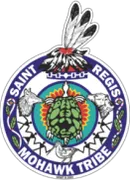Community Members Assist with Identifying Issues and Goals
Nolan Jacobs has joined the Tribe’s Environment Division as a Wildlife Technician Intern. He will assist the division to develop the Tribe’s Wildlife Management Plan. The U.S. Fish and Wildlife Service, Tribal Wildlife Grant (TWG) program funds the project. It was created in response to the Tribe’s Integrated Resource Management Plan (IRMP), developed from 2003 to 2009. Community members identified issues, concerns and goals for wildlife resources. Tribal members expressed concern for the decrease in fishing and hunting opportunities on the reservation, disease and environmental contamination in fish and wildlife and being unable to consume fish and wildlife as part of diets for fear of contamination. Other concerns are the loss of native fish and wildlife species such as lake sturgeon the Northern Harrier and the introduction of invasive species such as purple loosestrife and the Emerald Ash Borer and their affect on native species. Tribal members established the goals of improving hunting and fishing opportunities on the reservation and improving opportunities for including fish and game in their diets. Objectives to achieve these goals include increasing native sport fish and game populations by 50 percent in 50 years and decreasing invasive fish and wildlife populations by 50 percent in 50 years. Other objectives include educating all persons between the ages of twelve to nineteen on the cultural significance of hunting and fishing over the next 50 years, decreasing PCB levels to 2 ug/kg in food fish within 25 years, decreasing mercury to levels that are protective of human health in food fish within 25 years and reducing the risk for fish and wildlife diseases by 50 percent in 50 years. The IRMP showed that no serious effort has been made to assess reservation wildlife. More information is needed about wildlife populations before management can occur. The Tribe’s Environment Division will be active in developing the Wildlife Management Plan. It contracted with Bioengineering, Inc. of Salem, MA to assist with habitat assessment and plan development. The division will be presenting information regularly to the community for feedback. Nolan and the Bioengineering staff will make presentations in the community about conducting field surveys and collecting samples. Together they will visit sites and assess them for habitat quality. Nolan plans on doing a ruffed grouse drumming survey and collecting deer samples from road kills and hunters this fall. He is also available to respond to wildlife calls in the community to build a database of wildlife encounters. He will not capture or remove wild animals, but if community members sight any type of wildlife, they can call him and he will visit the location to collect information such as latitude and longitude, animal species and time of day. By building a database the division will establish an accurate picture of wildlife on the reservation. From that, the division can develop plans that might include trapping and habitat improvement and begin accessing resources to implement those plans. The Akwesasne community is welcome to provide feedback and input at meetings. They are also encouraged to visit the Environment Division to talk about the plan and offer their perspectives. The division is focusing on ruffed grouse and deer for now, and will add other components as resources allow. This project makes a good start in putting the community’s wishes into motion and makes them a reality. The division plans on establishing a Wildlife Department that will deal with fish, game and their management.
For more information: David T. Staddon, Director Public Information Office, Tel: 518-358-2272 ext. 286

